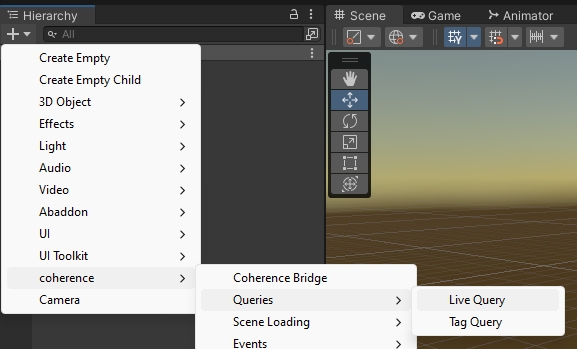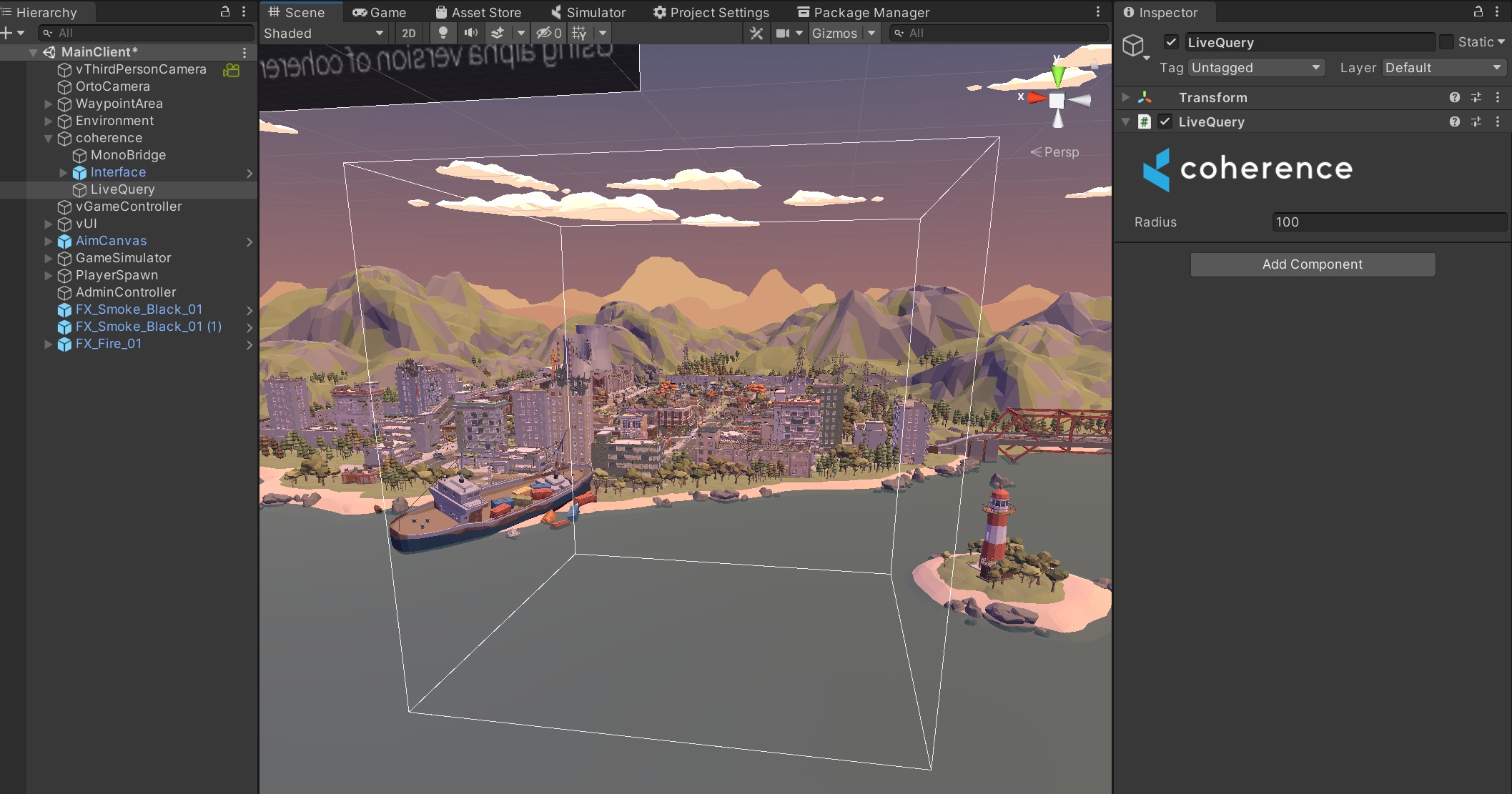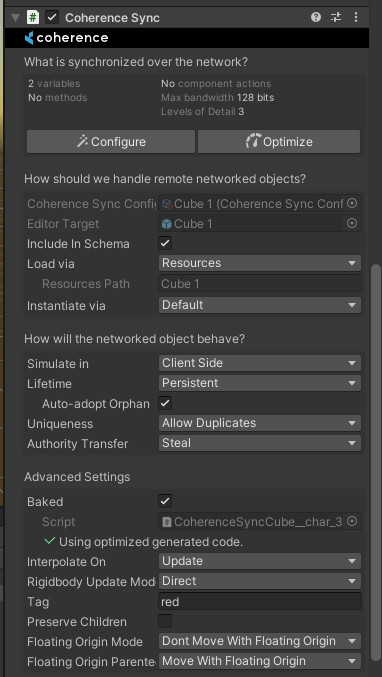Areas of Interest
LiveQuery
The way you get information about the world is through LiveQueries. We set criteria for what part of the world we are interested in at each given moment. That way, the Replicator won’t send information about everything that is going on in the Game World everywhere, at all times.
Instead, we will just get information about what’s within a certain area, kind of like moving a torch to look around in a dark cave.
Adding a LiveQuery to the scene

A LiveQuery is a cube that defines the area of interest in a particular part of the World. It is defined by its position and its extent (half the side of the cube). There can be multiple LiveQueries in a single scene.

Moving a LiveQuery
A classic approach is to put a LiveQuery on the camera and set the extent to correspond to the far clipping plane or visibility distance.
Moving the GameObject containing the LiveQuery will also notify the Replication Server that the query for that particular Game Client has moved.
Adding a TagQuery
In addition to the LiveQuery, coherence also supports filtering objects by tag. This is useful when you have some special objects that should always be visible regardless of World position.
To create a TagQuery, right click a GameObject in the scene and select coherence > TagQuery from the context menu.

All networked GameObjects with matching tags will now be visible to the Client. The coherence tag can be any string and can be configured separately from the Unity tag in the Advanced Settings section of the CoherenceSync component.

Tags and TagQueries can be updated at any time while the application is running, either from the Unity inspector or setting CoherenceSync.coherenceTag and CoherenceTagQuery.coherenceTag with code.
Currently, only a single tag per GameObject and TagQuery is supported. To include objects with different tags, you can create multiple TagQuery objects for each tag.
Last updated
Was this helpful?

